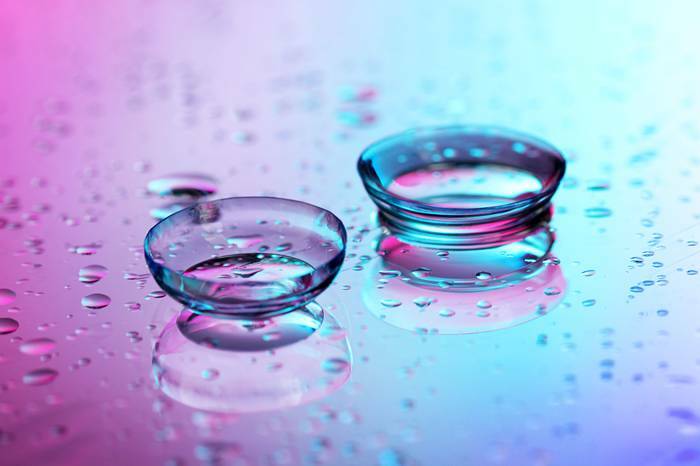
It's hard to imagine, but lenses are over 500 years old. In the 16th century, Leonardo da Vinci made sketches on which he depicted glass shells for vision correction. After another 300 years, the light blown glass lenses of the Müller brothers appeared. They covered the entire surface of the eye, had a white and transparent part, were very hard and required cocaine drops for anesthesia. The inconvenience was that under these prototypes of modern lenses, air accumulated and, in order to avoid interfering bubbles, the lenses had to be put on with the face in the water. In the twentieth century, it was the turn of soft polymer lenses, and then modern silicone hydrogels. Today's lenses are capable of helping with vision correction for myopia and hyperopia, astigmatism and presbyopia. In addition to corrective lenses, lenses can be colored, tinted and carnival.
But even the most perfect soft lenses with a thin edge — these are bodies alien to the eye. At the very beginning of use, when there is no skill yet, it may be difficult to put them on. Despite the softness of the lenses, it is possible to injure the cornea (the superficial transparent part of the eye). In the early stages of microdamage, there is no pain, there is a feeling that something has got into the eye or discomfort. However, if this condition is left untreated, infectious complications can occur. To avoid problems, you need to choose the right lenses and ask a specialist to explain how to use them. Corneregel will be useful for healing minor corneal injuries and eliminating the accompanying discomfort. This is a dexpanthenol 5% based remedy to restore the surface of the eye. Korneregel also includes carbomer, which increases the duration of contact of the active substance dexpanthenol with the cornea, which helps healing.
Those who are used to lenses and wear them long enough may have a different problem. — Dry eye syndrome. This condition also occurs in those who do not use vision correction, but much more often — for contact lens wearers. First manifestations — reddened, irritated eyes, gritty feeling in them. Sometimes people with dry eye are afraid to see a doctor because of the fear that a specialist will forbid the use of lenses. In fact, there are effective ways to combat the problem, for example, moisturizing ophthalmic solutions, similar in composition to a natural tear. Thus, the Artelac product line contains hyaluronic acid, which has a high ability to bind to water and moisturize the eyes. With this problem, it will be useful to use Korneregel as a source of dexpanthenol. — a precursor of pantothenic acid.
If you do not treat "dry eye syndrome", then there is a possibility of malnutrition of the cornea, as it receives oxygen from the lacrimal fluid. Subsequently, this leads to dystrophy — thinning of the cornea. This is manifested by blurred vision, double vision. Fortunately, the cells of the cornea are capable of repairing, to facilitate this process, you can use Corneregel. It stimulates the healing and recovery process. In addition to using Korneregel, your doctor may advise you to change the type of contact lenses, reduce the time you wear them, and follow the rules of their use more carefully.
Lenses can significantly improve vision and therefore quality of life. In combination with the use of Korneregel, the lenses expand the range of their capabilities, become even more comfortable and safer.
There are contraindications. It is necessary to read the instructions or consult a specialist.
Source: https://collaborativeeye.com/articles/best-of-aoc/scleral-lenses-from-the-renaissance-to-the-21st-century/



